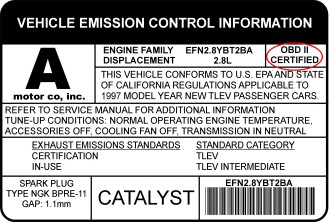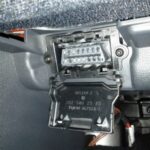The modern vehicle is a treasure trove of data, constantly monitoring performance, location, and diagnostics. For car enthusiasts, DIYers, and developers, accessing this data opens up a world of possibilities – from creating custom dashboards to building sophisticated telematics systems. Enter Arduino Obd2 Freematics, a powerful and user-friendly platform that bridges the gap between your car’s onboard computer and the limitless potential of Arduino programming.
Freematics ONE is ingeniously designed as an OBD-II dongle, seamlessly plugging into your vehicle’s OBD-II port. At its heart lies the ATmega328P microcontroller, the same chip that powers the Arduino UNO, making it instantly accessible to the vast Arduino ecosystem. This clever combination grants you direct access to your car’s Engine Control Unit (ECU), GPS data (with an external receiver), motion sensor readings, and the ability to integrate external sensors – all programmable with the familiar Arduino IDE. Let’s explore how Arduino OBD2 Freematics is revolutionizing vehicle interaction.
Key Features That Drive Innovation
Freematics ONE isn’t just another OBD-II adapter; it’s a feature-rich platform built for innovation:
- Arduino Compatibility: Programming is as simple as using an Arduino UNO. Leverage the extensive Arduino IDE, libraries, and online community to bring your ideas to life.
- Comprehensive OBD-II Access: Retrieve standard OBD-II PIDs (Parameter IDs), Diagnostic Trouble Codes (DTCs), and Vehicle Identification Number (VIN) directly from your car’s ECU for in-depth diagnostics and data analysis.
- Motion and G-Force Sensing: The integrated MPU-9250 9-DOF MEMS motion sensor measures G-force and motion, enabling applications like acceleration monitoring, tilt detection, and even accident detection.
- Car Battery Monitoring: Keep tabs on your car’s battery voltage to prevent unexpected power issues and ensure optimal performance.
- Expandable I/O: Digital and analog I/O pinouts allow for easy integration of external sensors, expanding the platform’s capabilities for customized projects.
- Onboard Data Logging: Store valuable data directly on a microSD card (up to 32GB) for later analysis or offline processing, ideal for long-term data collection and research.
- GPS Geolocation Ready: Connect an external GPS/GLONASS receiver for precise location tracking, geofencing, and mapping applications.
- Bluetooth Low Energy (BLE) Communication: Establish transparent serial communication over BLE, perfectly compatible with the Freematics App for real-time data visualization and control.
- Low Power Efficiency: Operates in a low power mode at just 10mA, minimizing battery drain when your vehicle is parked, enabling continuous monitoring without worry.
Hardware Breakdown: Engineering Excellence
Delving into the hardware specifications reveals the robust engineering behind Freematics ONE:
Core Specifications:
- ATmega328P Main Controller: The workhorse microcontroller, identical to Arduino UNO, ensuring seamless Arduino programming and compatibility.
- 32-bit Protocol Co-processor: Dedicated processing for efficient OBD-II and GPS data decoding, offloading the main controller and ensuring real-time performance.
- MPU-9250 9-DOF MEMS Motion Sensor: A high-precision sensor providing accurate motion, acceleration, and orientation data.
- microSD Card Slot: Supports microSD cards up to 32GB for ample data storage, crucial for data logging and offline applications.
- xBee Socket: Provides flexibility for optional communication modules like WiFi or GSM via an xBee module, further extending connectivity options.
- Compact Enclosure: Dimensions of 60x48x20mm ensure a discreet and unobtrusive installation in your vehicle.
Physical Connections:
- OBD-II Male Connector: Standard OBD-II connector for direct plug-and-play connection to your vehicle’s diagnostic port.
- microUSB Port: Used for Arduino programming, firmware updates, and serial communication.
- microSD Card Slot: Easily accessible slot for inserting and removing microSD cards.
- I/O Socket (Molex): Provides a convenient and robust connection point for external sensors and the GPS receiver.
- xBee Socket: Socket for optional xBee communication modules.
OBD-II Protocol Compatibility:
Freematics ONE is designed to communicate with a wide range of vehicles supporting standard OBD-II protocols. To verify your vehicle’s OBD-II compliance, locate the OBD sticker, typically found under the hood.
Image alt text: OBD-II compliance sticker example, typically located under the hood of a vehicle, indicating OBD-II certification.
Supported OBD-II Protocols:
- CAN 500Kbps/29bit
- CAN 500Kbps/11bit
- CAN 250Kbps/29bit
- CAN 250Kbps/11bit
- KWP2000 Fast
- KWP2000 5Kbps
GNSS (GPS) Integration:
For applications requiring location data, Freematics ONE supports external GNSS receivers. Connecting a compatible GPS receiver via the Molex connector on the I/O socket enables precise geolocation capabilities.
Image alt text: UBX-M8030 GPS Receiver with Molex connector, compatible with Freematics ONE for GPS functionality.
Image alt text: Freematics ONE GPS Connector, showing the Molex connector interface for external GPS receiver connection.
Image alt text: Freematics ONE with GPS receiver connected, illustrating the compact setup for vehicle telematics projects.
microSD Card for Data Logging:
The integrated microSD card slot, conveniently located under the side cover, allows for local data storage. Utilizing the standard Arduino SD library, accessing and managing data on the microSD card is straightforward.
Image alt text: Freematics ONE microSD card slot, showcasing the location for inserting a microSD card for data storage.
BLE Module for Wireless Communication:
Equipped with a BLE module (TI CC2541), Freematics ONE facilitates seamless wireless serial data communication. This feature works flawlessly with the Freematics Controller app, enabling real-time data monitoring and control from your smartphone or tablet.
Low-Power Mode for Continuous Operation:
Freematics ONE’s programmable low-power mode is a crucial feature for vehicle applications. In this mode, power consumption is minimized to approximately 10mA, preventing car battery drain while still allowing the microcontroller to execute low-power tasks like motion detection.
PCB Layout and Expandability:
For advanced users and developers, the PCB layout is available for detailed inspection.
Image alt text: Freematics ONE PCB Layout, illustrating the internal component arrangement and design of the OBD-II telematics platform.
Two I/O pins (PC0, PC1 or A0, A1 in Arduino context) are accessible for connecting external digital or analog sensors, further enhancing the customization possibilities. The I/O socket in newer revisions (2021 onwards) also supports digital I/O (3.3V) with updated API, expanding the platform’s versatility.
Software Ecosystem: Powered by Arduino
Programming Freematics ONE is as intuitive as working with an Arduino UNO. Simply use the standard Arduino IDE and upload your sketches via the USB port. Comprehensive documentation and user guides are available to assist you in getting started.
Pre-loaded Datalogger Firmware:
Out of the box, Freematics ONE comes pre-loaded with a datalogger firmware. This firmware automatically:
- Establishes connection with your vehicle via the OBD-II port.
- Connects to an external GPS receiver (if connected).
- Creates new data files on the microSD card.
- Logs OBD-II data, GPS data, and MEMS sensor data in a structured format.
- Communicates with the Freematics Controller app via BLE.
This pre-loaded firmware allows you to immediately start logging vehicle data without any initial programming, providing a quick and easy entry point into vehicle telematics.
Package Contents: What You’ll Receive
The Freematics ONE package includes:
- Freematics ONE x 1
- Micro USB cable x 1
- GNSS Receiver x 1 (optional)
- Extra accessories (optional)
Explore Further: Useful Links
- Freematics OBD-II Adapters
- Arduino IDE
- Freematics Controller
- Users Guide
- Datalogger Firmware Source Code
- Freematics Data Logging Format
- Freematics ONE Schematic
With Arduino OBD2 Freematics, the power to understand and interact with your vehicle’s data is now in your hands. Unlock the potential of vehicle telematics and start building your automotive innovations today.

